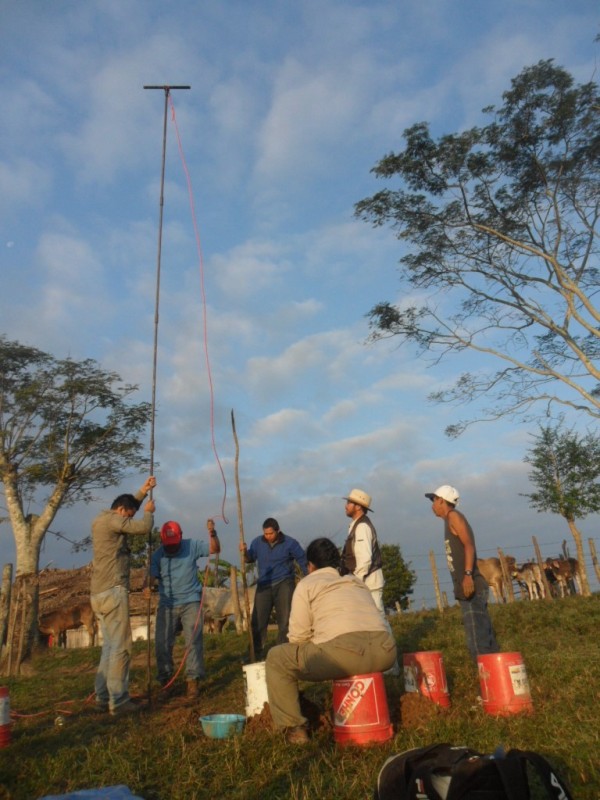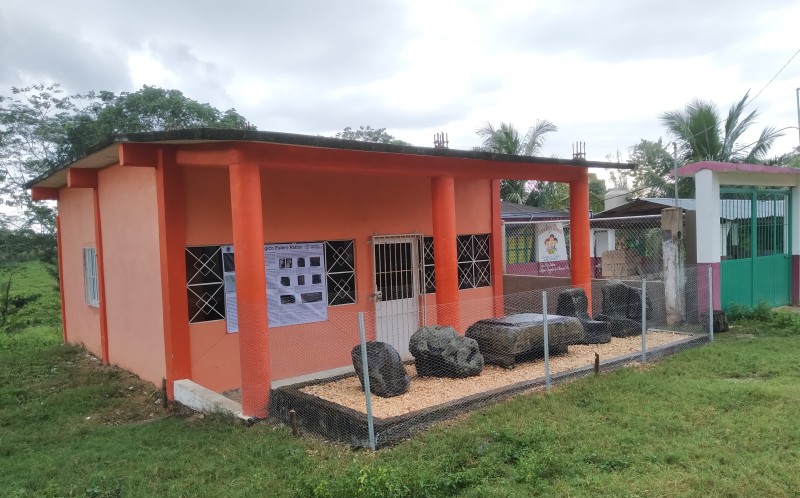Hirokazu Kotegawa
Affiliation: National Autonomous University of Honduras
Job Class: Visiting Fellow
Specialty: Olmec Archaeology, Public Archaeology, Museology
Research Topic
My research theme is the Preclassic Olmec culture (1800 BC to 400 BC) along the Gulf of Mexico. I have been researching monumental stone carvings in particular, but since 2012 I have been conducting excavations at Estero Rabón, which was a secondary center of Olmec society, to investigate how the middle and lower elites in Olmec society lived and supported the upper elites living in the capitals of San Lorenzo and La Venta. In the process, I have been able to show aspects of the post-Olmec Classic period (700 to 1000/1100 AD), which had been unclear until now, and have also seen connections with Olmec culture. However, since the essential aspects of Olmec society at the site are still unclear, I need to continue excavations to collect and analyze the data.
In addition, I am also conducting archaeological heritage protection activities and public archaeological research in the modern local community on the site, and I am looking for ways to make adequate use of the local archaeological heritage, including archaeological information. From 2019 to 2022, with the support of the Research Start-up Support Grant in Japan (“KAKENHI”), I conducted a research project titled "Reconstructing Identity Using Archaeological Heritage through Public Archaeology in Immigrant Societies" (19K23119), which revealed that there is still a lack of education and outreach activities related to archaeology, and that archaeological heritage plays an important role in revitalizing the region and constructing its identity.
At the National Autonomous University of Honduras, where I work, I participated in the "El Paraíso and Choluteca Anthropological Project" conducted by the Department of Anthropology of the Faculty of Social Sciences, and I teach the methods of surveys and excavations in the region, and engaging in research through the data obtained from the field school. In addition, from 2022, in connection with the same project, I began researching the possibility of creating and utilizing a virtual museum to make effective use of archaeological resources in Honduras.
Selected Publications
- Kotegawa, H. 2023. Aportaciones arqueológicas, educativas y del desarrollo local por el Proyecto Arqueológico Estero Rabón. In S. Nakamura, T. Adachi and M. Ogawa (eds.), Japanese Contributions to the Studies of Mesoamerican Civilizations, pp. 131-146. Japan, Institute for the Studies of Ancient Civilizations and Cultural Resources at Kanazawa University.
- Kotegawa, H. 2020. Aspectos Acuáticos de Estero Rabón: Reconstruyendo las Actividades Realizadas. In L. Budar and S. Ladrón de Guevara (eds.), Uso y Representación del Agua en la Costa del Golfo, pp. 219-232. Mexico, Universidad Veracruzana e Instituto Literario de Veracruz S.C.
- Kotegawa, H. 2018. El Trono de Estero Rabón. Revista Arqueología Mexicana 150: 56-57.
- Kotegawa, H. 2017. Posibles Imágenes del Trono Olmeca Encontrado en Estero Rabón, Veracruz, México. In B. Arroyo, L. Méndez Salinas and G. Ajú Álvarez(eds.), XXX Simposio de Investigaciones Arqueológicas en Guatemala, Tomo 2, pp. 749-758. Guatemala, Ministerio de Cultura y Deportes, Instituto de Antropología e Historia, Asociación Tikal.
- Kotegawa, H. 2017. Estero Rabón. Tradición Regional e Impacto Cultural Foráneo. In L. Budar, M. Venter and S. Ladrón de Guevara (eds.), Arqueología de la Costa del Golfo: Dinámicas de la Interacción Política, Económica e Ideológica, pp. 117-128. Mexico, Universidad Veracruzana.
- Kotegawa, H. and M. García Hernández 2017. Arqueología Pública en Estero Rabón. Revista La Ciencia y El Hombre 30(Especia): 42-49.


